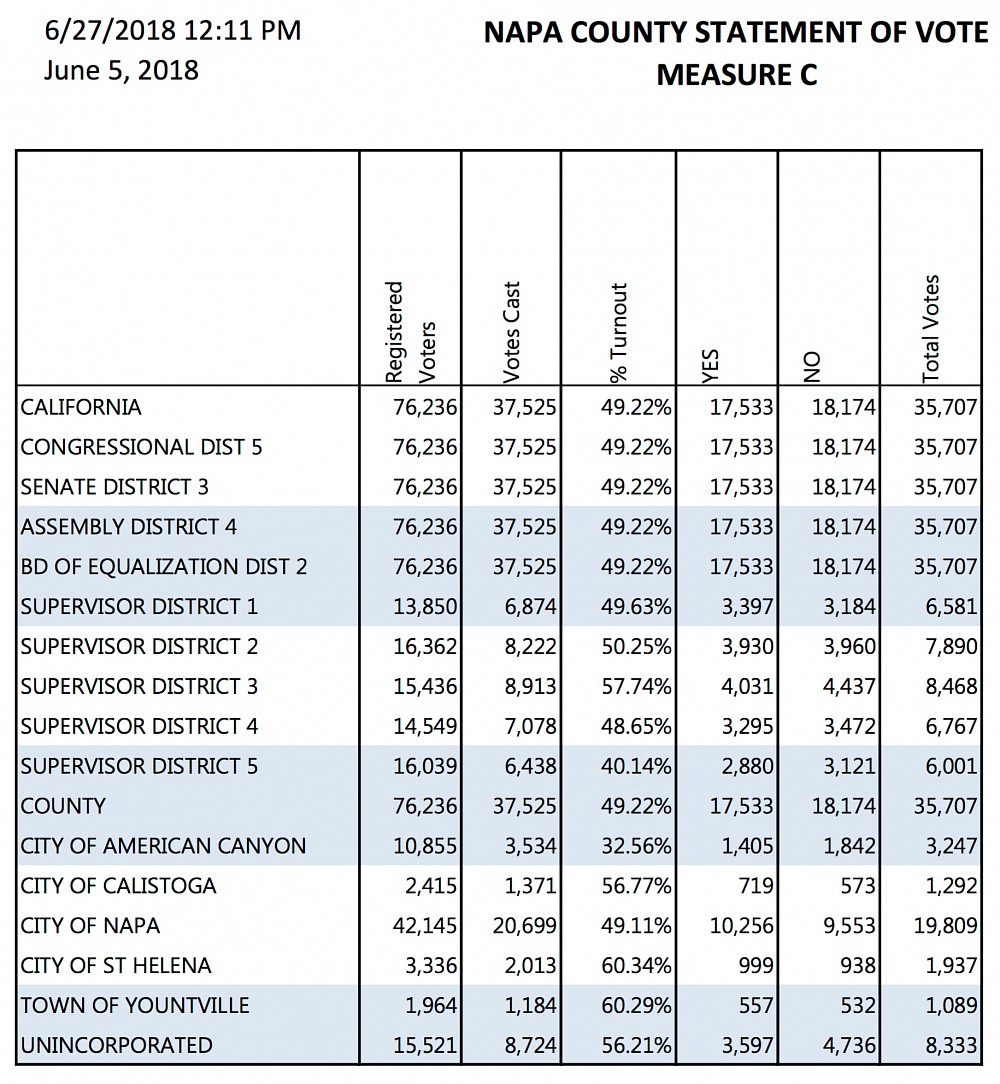
Measure C: what next?
on the web at: https://sodacanyonroad.org/forum.php?p=1924
George Caloyannidis | Jun 28, 2018Measure C was defeated by a mere 600 or so votes among the 36,000 cast. In the face of an extraordinarily high 47 percent voter participation for a primary election, the issue - far from resolved - is at its tipping point, serious enough for the supervisors to finally pick up the ball so that we don't end up at the ballot box once again.
Sifting through their related statements: Supervisor Pedroza advocates having a "conversation" and Supervisor Ramos proposes having that conversation at the Board of Supervisors' platform, meaning 3-minute comment periods at public hearings. But in the face of the one-sided APAC failed model, the time for conversations is over as it will undoubtedly be perceived as one more delaying tactic.
Given this reality, Supervisor Dillon's view that a resolution may be facilitated only through a "science-based" determination of the "carrying capacity of Napa County" is a good first step towards the big picture. Instead of the Planning Commission doling out new permits for more wine production, visitations and events for the asking as it currently does, a set of carrying capacity metrics would serve the long term health of the Napa Valley well.
But as constructive as a carrying capacity study would be, all factors that affect it must be examined and acceptable standards must be set for each one of them. How many wineries are enough? How many tourists are beneficial? How many woodlands - and not just oaks - must be protected? How much traffic congestion is acceptable?
Should winery and agricultural development be permitted on mile-long hillside roads with no secondary accesses? Should areas in the county be graded according to more, less or no development zones? How can we rectify the enormous damage winery use permit violators have inflicted upon our valley by escaping environmental review? Just to name a few.
Science, of course, can be helpful in setting standards in terms of water availability under extended drought conditions, carbon dioxide emissions, pesticide leaching and sedimentation into our reservoirs, traffic intersection grades, air quality.
Added to the difficulty of setting commonly agreed upon carrying capacity standards is the widening credibility gap between the residents and our county government.
The county has been reassuring the public for too long that it has been applying CEQA mandates effectively and that all developments have been mitigated to "less than significant impacts" until traffic congestion proved how misplaced the public's trust in the supervisors as guardians of the residents' quality of life has been. Other issues are less visible but there are there nonetheless.
The credibility of the Board of Supervisors was further compromised by its choice of the consultant for its 9111 reports on Measures C and D. These reports were not only bias-based but they attributed provisions to the initiatives that were downright false. If this were not enough, none of the supervisors challenged even a single finding in these reports during public hearings; in fact, they precluded answers to questions by the initiatives' drafting attorneys.
Entrusting the supervisors with the choice of widely acceptable consultants or with defining carrying capacity standards is highly problematic at this point and a serious dilemma right from the start.
As difficult as the task may be, it is imperative for such a process to move forward without delay. This is what governing is all about after all. Otherwise, anger and discontent will keep growing beyond its current tipping point with no telling where this may lead. Judging from the national political landscape, when officials remain unresponsive to wide public demands, mistrust grows and results can become irrational. Then the people are left with no choice but to take the law into their own hands by resorting to initiatives.
In the year ahead, I urge the Planning Commission and the supervisors to devote less time on processing single-interest applications and direct the bulk of their efforts on issues which affect the quality of life of all residents. Their policies of the past decade have seen the transformation of an agricultural economy into a tourist economy. The impacts on residents and on the natural environment were never adequately thought out.
It is time to right the ship.
NVR LTE version 6/27/18: Measure C: what next?
copyright © sodacanyonroad.org
